Key takeaways
- Depth in photography is achieved by skillfully layering foreground, middle ground, and background elements, creating a visual journey.
- Utilizing techniques like leading lines, depth of field adjustments, and foreground elements enhances the three-dimensional feel of images.
- Effective use of light and shadows adds texture and emotion, making images appear more immersive and dynamic.
- Post-processing adjustments, including dodging and burning, contrast enhancements, and color grading, further enhance the perception of depth in photographs.
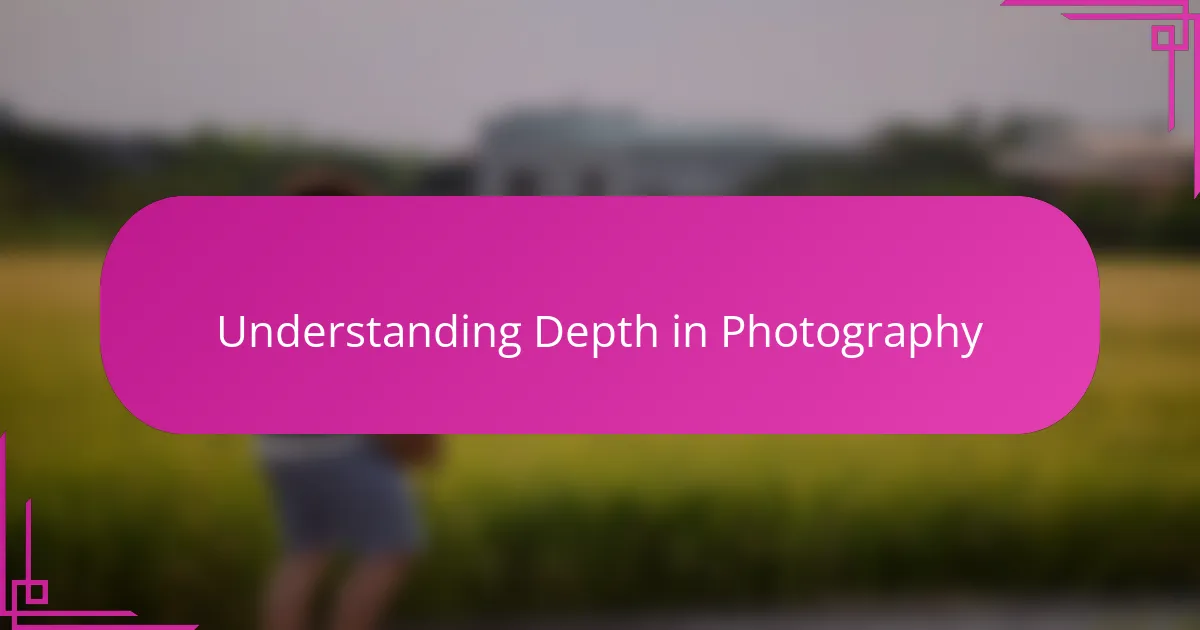
Understanding Depth in Photography
Depth in photography isn’t just about distance; it’s about creating a sense of space that pulls you into the scene. I remember the first time I truly saw depth in a photo—I felt like I could step right into it, wandering through the layers before me. Have you ever looked at a flat image and wished it had more dimension? That feeling is what depth brings to life.
When I think about depth, I imagine the interplay of foreground, middle ground, and background, each telling part of the story. It’s like composing a visual journey, where your eyes move naturally from one layer to another. This layering isn’t accidental; it’s a deliberate choice that adds richness and emotion to the image.
Understanding how light and focus contribute to depth has been a game-changer for me. Softening the background while keeping the subject sharp, or using shadows to create contrast, tricks the eye into perceiving more than just a flat plane. It’s fascinating how these simple tools transform a snapshot into an immersive experience.
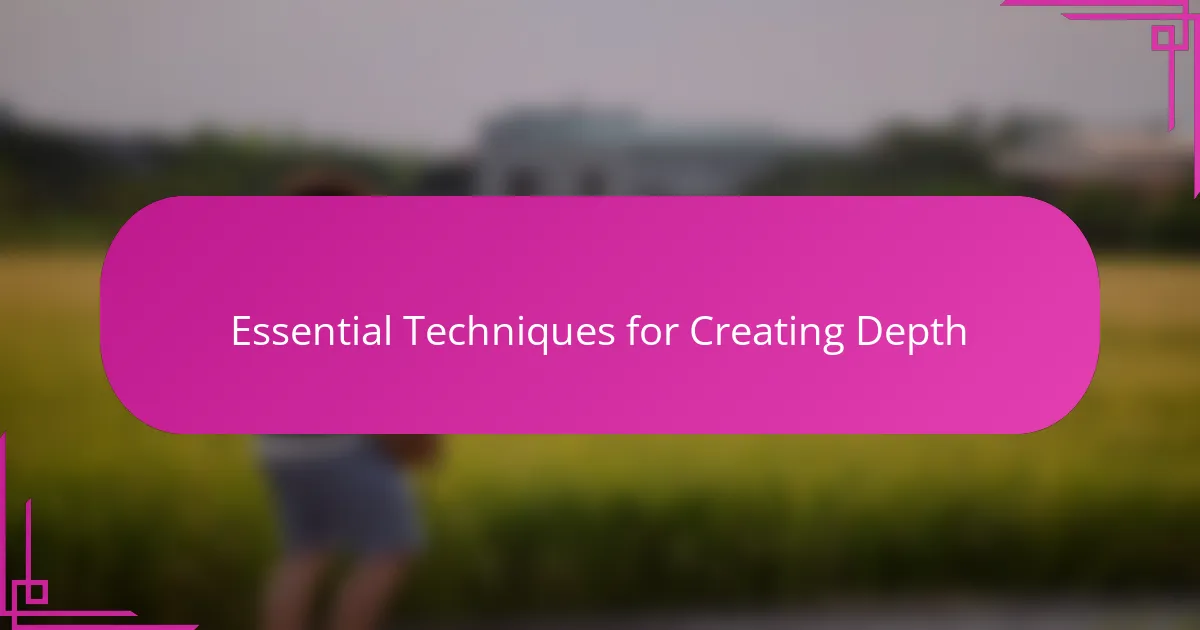
Essential Techniques for Creating Depth
One of the essential techniques I rely on is using leading lines. Whether it’s a winding path or the edge of a building, these lines guide your eye deeper into the frame, almost like a gentle invitation to explore. Have you ever followed a road or fence in a photo and suddenly felt like you were moving through the scene? That’s the power of leading lines.
Another trick that has become second nature to me is playing with depth of field. By focusing sharply on my subject while blurring the background, I create a clear separation that gives the image dimensionality. It’s amazing how a simple adjustment to aperture can shift a photo from flat to full of life—like bringing a story into focus while setting the scene behind it.
I also love incorporating elements in the foreground, even if they’re just out of focus. It adds a subtle frame that expands the sense of space and invites viewers to look beyond the immediate subject. It’s almost like whispering, “There’s more here—go ahead, take a closer look.” Have you tried adding a leaf or a shadow near the lens? That little touch can transform the entire mood.
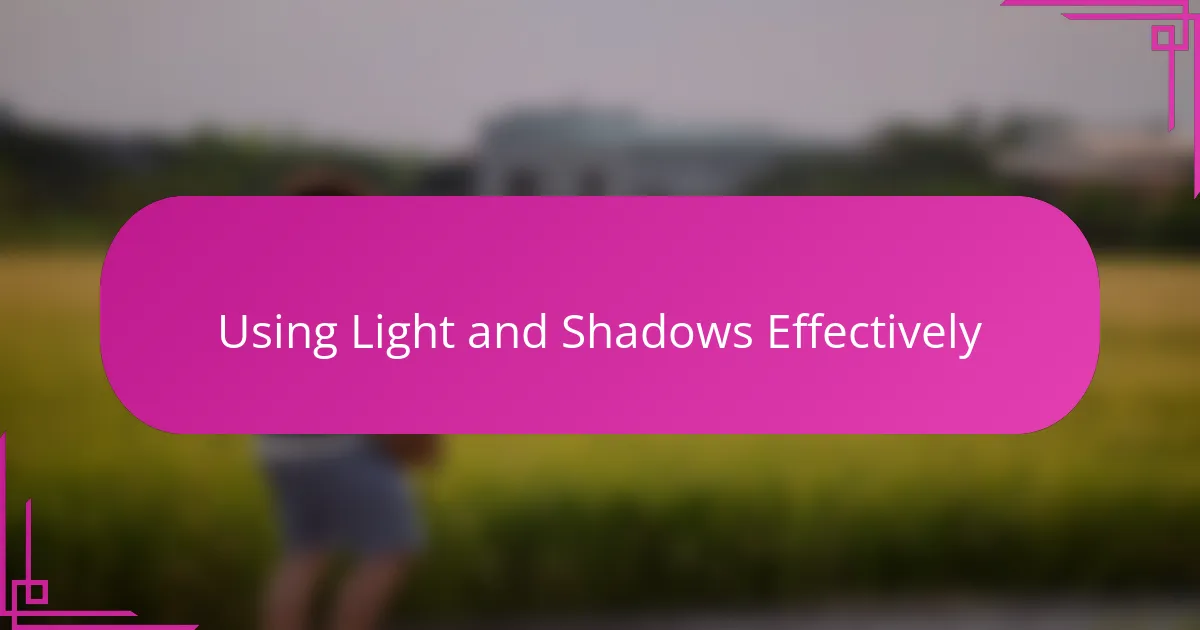
Using Light and Shadows Effectively
Light and shadows are my secret ingredients for adding depth. I often wait for those moments when sunlight streams through a window or filters under trees, casting long, soft shadows that carve out layers in my scene. Have you noticed how shadows can transform a simple object from flat and boring to mysterious and dimensional? That’s exactly the effect I aim for.
I remember shooting a portrait where the side lighting created dramatic shadows on the subject’s face, and suddenly, the image felt alive with emotion and texture. Shadows don’t just darken an area—they create contrast that pulls the eye deeper into the frame. By balancing light and shadow, I guide viewers through the story hidden in every corner.
Sometimes, I experiment with backlighting to produce silhouettes or glowing edges that separate subjects from the background. This interplay of light shapes and shadows not only adds depth but also a sense of mood and atmosphere. Have you ever tried shooting with the sun behind your subject? You’d be surprised how much depth that simple technique can inject into your photos.
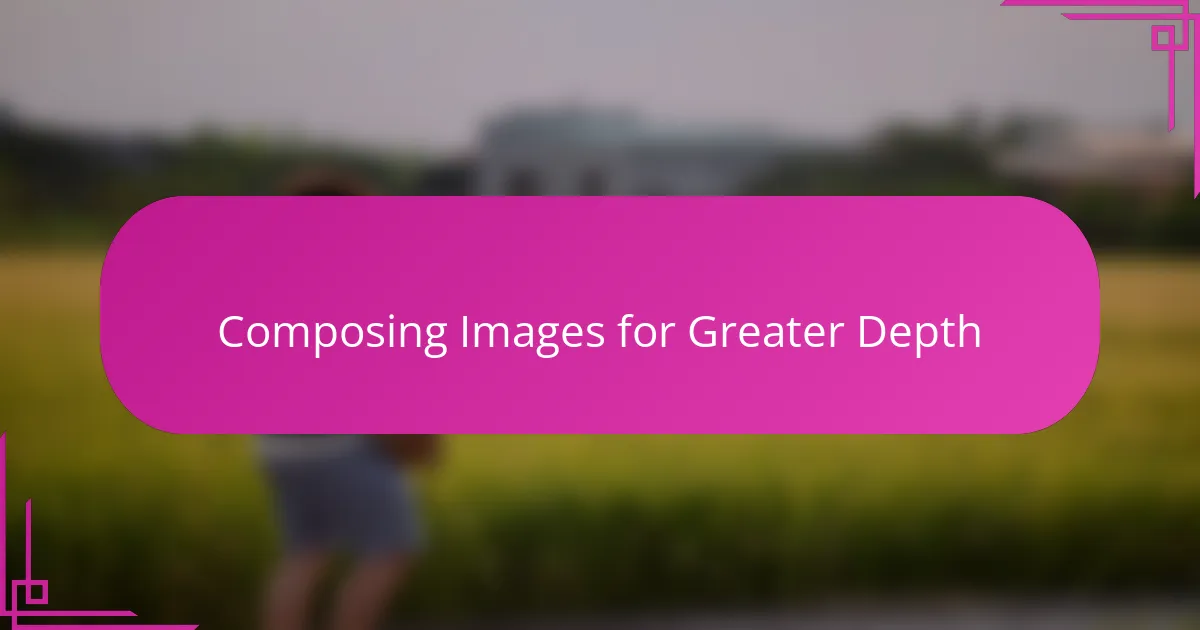
Composing Images for Greater Depth
When I compose my images, I’m always thinking about how to arrange the different elements so they naturally lead the viewer’s eye deeper into the scene. Placing objects at varying distances isn’t random; it’s a way to create a rhythm that feels alive, almost like the photo is breathing. Have you ever noticed how an empty foreground makes a landscape feel vast, but adding a rock or a flower close to the lens pulls you in right away?
I’ve found that giving careful thought to how I frame my shots makes all the difference. Positioning something interesting in the foreground—maybe a textured leaf or an out-of-focus branch—acts like a door into the photo, inviting curiosity. It’s a simple trick, but when done well, it turns a flat snapshot into an immersive journey through space and story.
Sometimes, I challenge myself to use natural frames like arches or window panes within the composition. Not only do these frames add layers, but they also create a feeling of peeking into a hidden moment, which adds emotional depth. Do you recall a photo that made you feel like you were spying on a secret scene? That’s the magic I aim to capture when composing for depth.

Lens Choices and Their Impact
Choosing the right lens has always felt like picking the right voice to tell a story. I often reach for a wide-angle lens when I want to emphasize the distance between foreground and background—those exaggerated perspectives naturally pull the viewer deeper into the scene. Have you ever noticed how the same spot can feel completely different when shot with a wide lens versus a standard one? That’s the subtle power of your lens choice.
On the other hand, telephoto lenses have their own magic in compressing space, making layers sit closer together and creating a more intimate depth. I remember capturing a mountain range with a telephoto, where the overlapping ridges seemed to stack like waves, drawing me into their rhythm. It’s fascinating how this compression can make distant elements feel accessible, almost within reach.
Then there’s the classic standard lens, which, to me, offers a natural perspective that feels true to the human eye. Using it helps me create images that invite viewers to step into a scene without distortion, providing a comfortable entry point to explore depth. Have you tried switching lenses mid-shoot just to see how your connection to the subject changes? It’s a simple experiment that always opens my eyes to new ways of seeing.
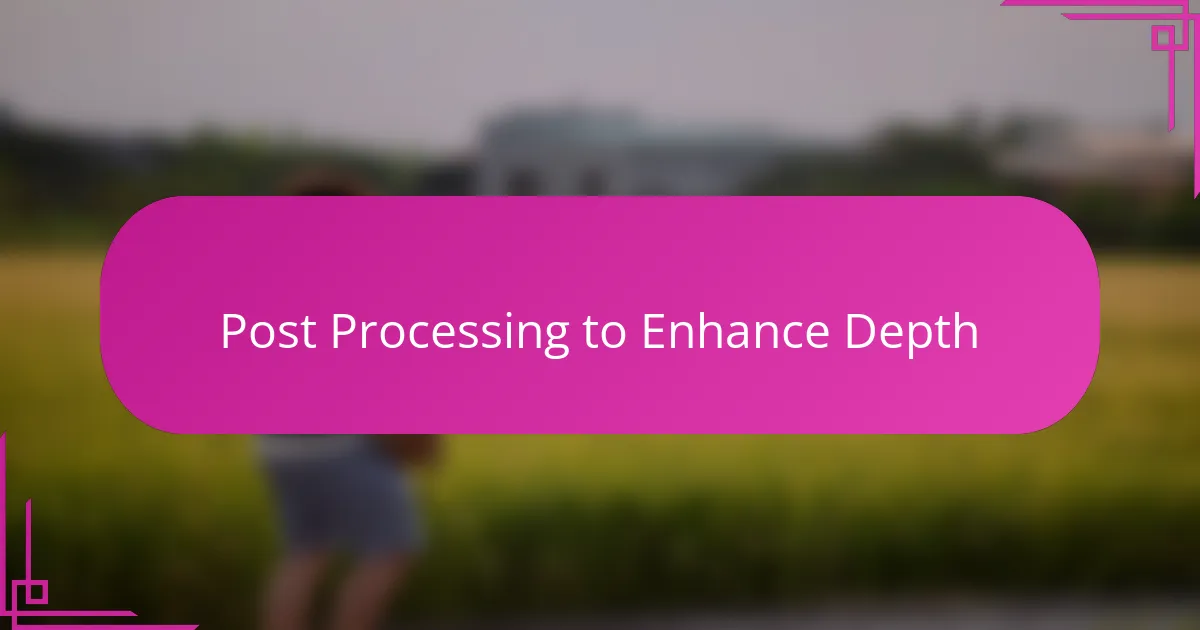
Post Processing to Enhance Depth
When I dive into post processing, I often start by gently dodging and burning areas to enhance the natural contours in my image. It’s incredible how selectively lightening and darkening parts of a photo can reinforce the feeling of depth, almost like sculpting with light. Have you ever noticed how shadows that deepen or highlights that pop can guide your eye through the layers of a scene?
I also lean on clarity and contrast adjustments with care—they can add texture and separation between elements without making the photo look artificial. One time, I subtly boosted the midtone contrast in a forest shot, and suddenly, the trees seemed to recede into the mist while the foreground leaves stood out crisply, creating a beautiful sense of space. That moment reminded me why careful enhancement in post is just as important as what happens in-camera.
Then there’s the magic of selective color grading. Shifting cooler tones into the background and warming up the foreground subtly tricks the brain into perceiving distance. I enjoy experimenting with this when editing landscapes, asking myself: how can I nudge the viewer’s eye from front to back with color cues alone? It’s a quiet but effective way to breathe life and depth into a flat image.

Personal Tips for Depth Creation
One personal tip I always follow is to physically move around my subject rather than just zooming in or out. Shifting my position even slightly can reveal new layers and angles that add unexpected depth. Have you ever captured a scene that looked ordinary at first but came alive just by changing your viewpoint? That’s the kind of discovery I keep chasing.
I also rely heavily on the play of textures in my images. Whether it’s rough bark, soft petals, or reflective water, contrasting textures help separate elements and create dimension. I remember a shoot in a foggy forest where the wet leaves in the foreground popped against the hazy background—those tactile differences made me feel like I was stepping into the scene, not just looking at it.
Sometimes, I find that less is more when it comes to depth. Instead of crowding the frame, I choose a few carefully placed elements that guide the eye naturally. It’s like composing a quiet melody rather than a noisy chorus. Have you noticed how a simple branch or a lone figure can instantly add layers and invite you in more than a busy scene ever could? For me, this subtlety is where depth truly breathes.